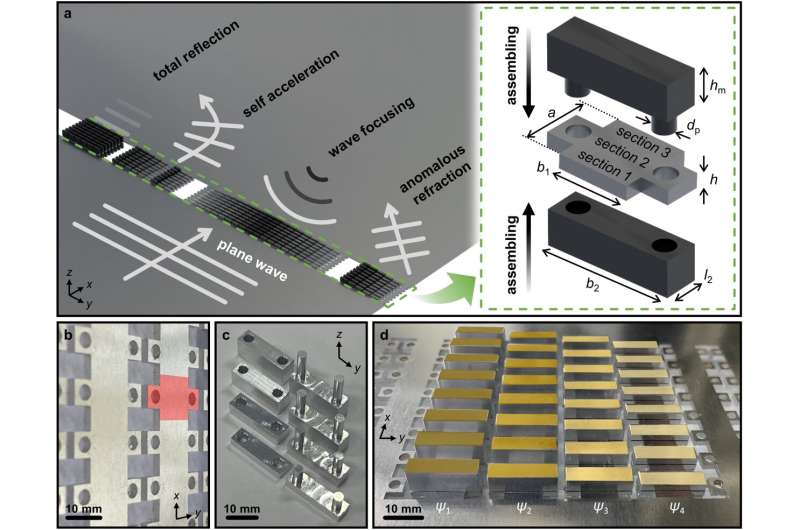
Energy harvesting, an eco-friendly technology, extends beyond solar and wind power in generating electricity from unused or discarded energy in daily life, including vibrations generated by passing car engines or trains. Recent intriguing research aims to enhance the efficiency of energy harvesting using a new type of metasurface that can be reconfigured, resembling the assembly of LEGO bricks.
A collaborative research team has developed a multifunctional elastic metasurface that can be freely configured by attaching and detaching components for practical applications. This research appears in Advanced Science.
Metamaterials are artificially designed structures that exploit the relationships among wavelengths to manipulate wave energy such as light, vibration, and sound. Harnessing this capability in energy harvesting allows for the gathering of elastic waves in piezoelectric components, thereby increasing the efficiency of electricity production. However, limitations in the theoretical analysis of the beams constituting metamaterials confine their operation to a single frequency and restrict their utility to specific purposes, posing challenges for their practical application in real structures.
The research team overcame these limitations by employing the Timoshenko–Ehrenfest beam theory instead of the conventional Euler-Bernoulli beam theory. What distinguishes the former is its consideration of the fundamental characteristics of elasticity, including shear deformation and rotational inertia effects of the beam. This study marks the first application of this theory to elastic metamaterial research.
The researchers succeeded in interpreting and modeling elastic metamaterials for phase modulation of elastic waves using the Timoshenko–Ehrenfest beam theory. Furthermore, they fabricated a new type of Timoshenko–Ehrenfest beam-based reconfigurable elastic metasurface (TREM) capable of attaching and detaching multiple structures. The TREM can reconstruct its surface depending on its application, enabling control over various wave phenomena such as anomalous wave refraction, wave focusing, self-accelerated wave propagation, and total wave reflection across a wide frequency range.
Notably, the team's TREM demonstrated outstanding effectiveness in harvesting elastic wave energy, enhancing the electrical output power of piezoelectric components by up to eight times. This highlights its value as a piezoelectric energy harvesting system.
Professor Junsuk Rho from the Departments of Mechanical Engineering, Chemical Engineering, and Electrical Engineering and Ph.D./MS student Geon Lee from the Department of Mechanical Engineering at Pohang University of Science and Technology (POSTECH) joined Professor Miso Kim from the School of Advanced Materials Science and Engineering at Sungkyunkwan University (SKKU) to collaborate on this project.
Professor Rho said, "I believe that our newly developed metasurface, designed to operate across multifunctional and wide-frequency ranges, will prove invaluable in energy harvesting, most notably in the eco-friendly utilization of ambient energy. This technology, along with its applications in structural health monitoring, wireless sensing, and the Internet of Things, holds great potential for significant contributions across diverse fields."
More information: Geon Lee et al, Timoshenko–Ehrenfest Beam‐Based Reconfigurable Elastic Metasurfaces for Multifunctional Wave Manipulation, Advanced Science (2024). DOI: 10.1002/advs.202400090
Citation: Building blocks for greener energy: Reconfigurable elastic metasurface components akin to LEGO (2024, April 2) retrieved 2 April 2024 from https://techxplore.com/news/2024-04-blocks-greener-energy-reconfigurable-elastic.html
This document is subject to copyright. Apart from any fair dealing for the purpose of private study or research, no part may be reproduced without the written permission. The content is provided for information purposes only.
